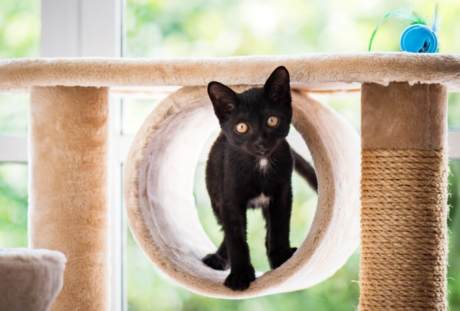
You’re not the only one who needs to work out. Exercise is important to your cat’s overall health. Movement, especially the kind that uses her hunting skills, can keep her weight down and help her work off extra energy. Playtime is crucial for her mental well-being, too — it can help stop depression and boredom, which can lead to bigger health and behavior issues.
With a little help from you, your kitty can stay healthy and active — and have a little more fun, too.
Aim to play with your cat for around 10 to 15 minutes at a time. If she doesn’t enjoy it, she’ll let you know. When she gets bored, put the toys away and offer some praise and a few treats.
Introduce some new toys. You probably already know that cats are fond of feathers and strings. But you can watch her while she plays to find out what kinds of objects she likes best. Try out a toy shaped like a bird, then one that looks like a mouse, and another that resembles a bug. The plaything she likes most can help you figure out what kind to buy in the future.
Be prepared for the kill. Cats are especially satisfied when they can get their teeth and claws solidly into their playthings. Let them do it, and be ready to offer replacement toys and feathers when old ones get worn out.
Add some new levels to your games. Get a multi-story cat tree and put it near an open floor space where your cat can run, then jump onto it.
Get your cat a piñata. Cats love to bat things that hang overhead. Food inside will offer even more motivation. To make a piñata, use a plastic container, like an old yogurt or sour cream cup with a lid. Cut a small hole in the bottom of it. Put a treat or two inside and hang it up with a string where your cat can reach it. If she hits it the right way, the treats will fall out.
Put on a tail. If you tuck a string or a long piece of cloth into the back of your pants, your cat can chase it as you walk around the house. But don’t leave the string out if you’re not supervising. If your cat swallows the string, it can be life threatening.
Take a hike. Just like dogs, cats can learn to walk on a leash, though it’s best if you can teach her how while she’s young. Strolls outside are best suited to cats who aren’t shy. Use a harness instead of just a collar and the leash. Before you go outside together, make sure there aren’t any loose neighborhood dogs that might spook her.
Don’t forget the lasers. A laser pointer can provide endless entertainment and, yes, exercise, as your cat chases it.
Put playtime on the calendar. Carve out a spot in your schedule for you and kitty to have some fun every day. Cats are most active at dawn and dusk, so the evening or early morning would be ideal. You might also work in a play session before her meals to give her the thrill of the hunt as she “catches” her food.
Author: WebMD Veterinary Reference; Reviewed by Amy Flowers, DVM
Link: https://pets.webmd.com/cats/cat-exercise#1 https://pets.webmd.com/cats/cat-exercise#2

